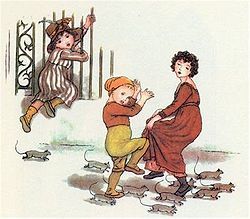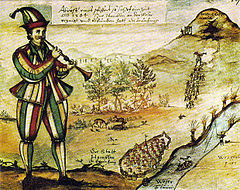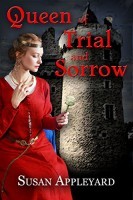Susan Appleyard's Blog, page 21
September 19, 2015
My adventure in traditional publishing – part 2
This will be short and sweet (bitter, actually.) It finally happened, almost two years after I had been notified by my agent that a publisher was willing to offer me a contract for not one, not two, but three books: the thrill of seeing my book in print, with a glossy cover. I have read a lot recently about self-published authors not getting an editor and allowing their books to be published with mistakes. The consensus appears to be that as long as the errors are few, they won’t interfere with the average reader’s enjoyment of the story. Does anyone think that errors do not occur in traditional publishing? Of course, they do. We’ve all seen them.
Mine was a horror, and not my fault. As I read it through, I realized that the end of one chapter, several sentences, had been missed off entirely so the chapter ended rather abruptly. It was there in the galleys, and could only have been an error by the printer. There was nothing to be done about it.
Fast forward to the following year and my second book came out. Shortly after this (looking back it seems like only a couple of weeks) a call from my agent was how I learned that my publisher was selling out to another company and retaining only its distribution division. My contract was sold as part of the package but the new company wasn’t interested in me. In the same call my agent told me that she was going into furniture sales.
My burgeoning career was in the toilet. Back to square one after the merest sip from the cup of success. I was dismayed, discouraged, disheartened and disgusted. But I told myself that I had done what I set out to do. I had got not one but two books published. Thereafter, I gave up trying to get published and went on to do other things. But I never gave up writing. Now and then, whenever the mood took me I would write – not to any real purpose, just to get it out of my system. What I would give to have those years back. When I retired (and had got over my pique) I did try the traditional publishing route again, but without success.
And there the story might have ended if not for self-publishing. Yay! A happy ending.


September 10, 2015
A wonderful review.
I don’t think I could ask for a better review than this. I wish I could thank the reviewer.
Superior historical fiction
By N. H. on August 25, 2015
Format: Kindle Edition
Queen of Trial and Sorrow by Susan Appleyard is a historical fiction set in one of the most fascinating periods of English history, the late Plantagenet Dynasty. Writers like Phillipa Gregory and Alison Weir have been mining this territory for a while. Ms. Appleyard is certainly qualified to be listed in the same company. In fact Queen of Trial and Sorrow is a better book than Gregory’s White Queen.
The story is told from Elizabeth Woodville’s point of view. It covers briefly her time before she met King Edward IV. Ms. Appleyard gives Elizabeth a believable voice for an educated woman of her time. She also gives her some of the pride that many authors feel was Elizabeth’s fatal flaw. The entire book was good but the last chapter was excellent. Elizabeth, facing her death, looks back over all that has happened and all that she has lost. She has come to terms with all of it. But the most wrenching sentence of the book is lurking there, “How long did my poor sons suffer the anguish of knowing that their lives were being snuffed out before they had really lived?”
This is where Ms. Appleyard excels with creating Elizabeth’s character. She creates a powerful but haunted woman who ultimately wakes and sleep with the death of her loved ones as a constant companion. I highly recommend Queen of Trial and Sorrow for any lover of historical fiction. Even if you are not familiar with the time period, the story is so well written you will find yourself transported by it.
“I was provided with a free copy of this book by Reading Deals Review Club so I could give an honest review.”


September 5, 2015
Sisi: Empress of Austria
I have just returned from Europe where I immersed myself in Sisi. No, that’s not a mud bath or a little-known but exciting author. Sisi was almost the last Empress of Austria, the beloved wife of Franz Josef until her death, and the subject of my work in progress. It was quite a thrill to visit her apartments in the Hofburg and Schonbrunn, to see the bed she slept in, the desk at which she wrote her letters and poems, the gym equipment she used to maintain her figure and health, to imagine her in the environment she found so oppressive. A pity there was a thick red rope in the way to prevent me from sitting where she sat, but I understand the necessity. Surrounded by such opulence, I asked myself, what drove her to flee it? Was it the always prying eyes? The iron-bound court protocol? Was it that Franz Josef wasn’t equipped emotionally to give her the kind of devotion she needed because he was devoted first to duty? What made her so unhappy she had to search the world for fulfillment. These are a few of the questions I must answer.
Sisi will be a challenge.


August 18, 2015
Gone author
August 16, 2015
Advertising: Amazon vs. Goodreads
 Originally posted on chrismcmullen:
Originally posted on chrismcmullen:
ADVERTISING e-BOOKS
Since KDP introduced Advertising Marketing Services (AMS) for KDP Select books earlier this year, I’ve placed 50 ads on a variety of nonfiction Kindle e-books.
I’ve also placed over a dozen ads with Goodreads. It’s interesting to compare the two options for advertising e-books.
AUDIENCE
There are two great things about advertising right on Amazon’s website or on a Kindle device (both are possible with AMS via KDP):
Many of the customers who see your ad are already shopping for other books, i.e. they are looking for books to read, they have their wallets out, and they are ready to spend money.
Since they are already on Amazon, your ad isn’t interrupting some other activity and trying to persuade customers to leave one site to visit another.
If you advertise at Goodreads with a link to your Amazon product page, you’re asking readers who were…
View original 1,302 more words


August 14, 2015
The pied piper of Hamelin: fact of fairy tale?
Like many stories from our distant past the pied piper appears to be a mixture of both with a good deal of theory thrown in. We know how the fairy tale goes. Hamelin, a town in Saxony was overrun by rats.

Along came a piper who claimed he could get rid of the rats if the town would pay him. He played his pipe and led the rats to the River Weser, where they drowned. But then the town refused to pay him. Using the power of his pipe, he lured the children out of the town and they were never seen again. Two were left behind, one lame and one blind, who couldn’t keep up. That’s the fairy tale.
Here are the facts. The picture below is based on a stained glass window that was once in the church in Hamelin. The window has since disappeared but we know it existed because it was mentioned in several writings before its destruction in 1660. Furthermore there is a brief but sad entry in the town chronicles for 1384 which states, ‘It is 100 years since our children left.’

The theories. If we discount the fairy tale, we are left with several that range from a plague that picked off the children; or they were drowned in the Weser or killed in a landslide or sinkhole, none of which appear to me to account for the wording of the chronicle: ‘…our children left us.’ Some theorize they were lured away by a religious sect, or perhaps they became part of another children’s crusade, and the piper was some kind of recruiter. Or perhaps the region was overpopulated, stricken by famine, and the children were sold. It did happen in those days.
My favorite theory is one in which nothing nasty happened to the children. They weren’t small children, but were in fact young people who emigrated voluntarily when new land opened up. After all, I still refer to my children as children even though they are middle-aged. This is what the town of Hamelin’s official website has to say.
‘Among the various interpretations, reference to the colonization of East Europe starting from Low Germany is the most plausible one: The “Children of Hameln” would have been in those days citizens willing to emigrate being recruited by landowners to settle in Moravia, East Prussia, Pomerania or in the Teutonic Land. It is assumed that in past times all people of a town were referred to as “children of the town” or “town children” as is frequently done today. The “Legend of the children’s Exodus” was later connected to the “Legend of expelling the rats”. This most certainly refers to the rat plagues being a great threat in the medieval milling town and the more or less successful professional rat catchers.‘
Yes, it’s plausible, All that can be said with certainty is that something happened in Hamelin one June day in the late thirteenth century.


August 5, 2015
My adventure in traditional publishing
A long, long time ago, in the days of yore, even before the internet and all its offshoots was anything more than a gleam in a mad scientist’s eye, I was traditionally published. Furthermore, the publishing company actually paid me for the right to publish my book. It’s called an advance. Come what may afterward, my book had earned money and people would read it. So far so good.
The book was about the favorite mistress of King Edward IV, and I called it The Merry Harlot because… well, that’s what she was. My editor didn’t like the title because she was afraid my readers wouldn’t know what a harlot was! She suggested The King’s White Rose. Who was I, a young housewife with three rambunctious kids, to argue with someone of such vast experience? So I agreed to the name change. After all, I consoled myself, a king figured prominently in the story and one of his heraldic symbols was the white rose. So there was some relevance.
As an aside, in creating a certain scene I mentioned a pincushion. The copy editor discovered that this object hadn’t been invented until the 16th century and as my book was set in the 15th, the pincushion had to go. The point of this, in case you missed it, is that my readers were viewed as so stupid they wouldn’t know what a harlot was, yet so smart they would know that the pincushion hadn’t been invented until in the 15th century!
Fast forward to my second book, which I didn’t have a title for. It was set in the Holy Land during the second crusade. My editor suggested The Sultan’s Red Rose.
“But,” I sputtered, “there isn’t a sultan in the story!” There wasn’t a red rose either, but that didn’t seem quite so important.
“What about this fellow, Zengi?” said she.
“He’s an atabeg,” I retorted, “which is like a military governor.”
So she thought about this for a while and finally came up with a stunning solution.
“Why not have so-and-so compare our heroine to a rose growing in the sultan’s garden?”
I know you would like to hear that I stuck to my ideals, that I didn’t prostitute my art for the almighty dollar, that I told her if she persisted in this tacky, tasteless design she could take a long jump off a short pier. Don’t be ridiculous! Of course I didn’t.
Very soon after that book came out, my burgeoning career went down the toilet. My agent went into furniture sales and my publishers sold out to another company; my contract was sold as part of the package, but they were not interested in me. It was back to square one. I was dismayed, disheartened and discouraged.
A sad story, isn’t it? But put the tissues away, it has a happy ending. The next time I was published I did it myself as an ebook and, rightly or wrongly, chose my own titles.
I can honestly say I would never wish to be traditionally published again.


August 3, 2015
Review from HNS

Find & buy on
This novel gives a realistic depiction of Elizabeth Woodvile, who is usually portrayed as ambitious, greedy and scheming. Appleyard’s Elizabeth is ambitious for herself and her large family, yet very much in love with Edward IV. The surrounding historical characters are likewise realistic, neither completely good nor completely evil, in contrast to many other fictional works based in this time period, which seem to exaggerate the negative characteristics of these same historical figures.
Appleyard has obviously done extensive research. Whenever possible, the book appears to be consistent with known historical facts.
I would recommend this story to anyone who is interested in reading about the Wars of the Roses. Although a historical background is helpful when reading fiction set during this time period, Appleyard provides accurate material and the necessary historical detail to understanding her characters and their actions.


July 25, 2015
More of the Queen of Trial and Sorrow and This Son of York.
Oops, I forgot to post a new segment of one of my books last week (pressure of work – sigh) so here’s a double helping.


July 24, 2015
Edward IV the merchant king by Susan Appleyard
When he ascended the throne, Edward was poorer than a church mouse. Not only did he inherit his father’s debts, but also took upon himself the debts of Henry VI. At the close of Henry’s reign the Crown’s indebtedness amounted to nearly four hundred thousand pounds. Some of those debts had been outstanding for years. Matters had reached the point where no one was prepared to invest in the government, even at exorbitant rates of interest. To put this figure in some perspective, Henry’s income at that time amounted to little more than thirty-three thousand pounds. It had been eroded by his well known practice of alienating Crown lands, wardships and other sources of revenue to reward those often little deserving of reward. He could never have recovered.

Edward had no choice but to assume his rival’s obligations because he was canny enough to realize that if a man should decide the only way he would get his money back was if Henry was restored to power, then clearly it was in his interest to support Henry.
Furthermore, in those early years Edward had expensive campaigns to fight against the erstwhile king and queen. And he wanted a splendid court to show visiting dignitaries that England under him was growing in prosperity and power. But where was the money for all this to come from? Parliament provided some ‘for the defense of the realm’ not all of which was used for the purpose intended, but we won’t go there.
Very early in his reign Edward, who was nothing if not innovative, decided to become a merchant. While in Calais with Warwick, and in London, too, he would have met the Celys, the Canynges, the Cooks and other fabulously wealthy merchants who lived like princes – well, earls anyway – and likely influenced him to try his hand.
At first he exported wool and woolfells, which, being of the finest quality, were much in demand for making into cloth, particularly in Flanders. Although wool was in its heyday, cloth manufacturing was burgeoning, and soon he was exporting English cloth, dyed and undyed, as well as tin, lead, pewter vessels, wheat, rye and beans and lambskins. Imports included treacle – yes, treacle – paper, oil, woad, alum, wax, complete harnesses, wine and wormseed, even a popinjay, among a variety of other products.
To give some idea how busy he was , in February 1470, just as he was dealing with Warwick’s second rebellion, 25 ships entered or left the port of London alone, carrying goods belonging to the king. His loss of the throne caused only a brief interruption in his mercantile endeavors. He was soon back in business.
Nor was he alone in dabbling his august fingers in the vulgar business of trade. What was good enough for the king was good enough for the Duchess of York, the Earl of Warwick and his brother George, the Earl of Essex, Lords Hastings, Howard, Duras, Fauconberg and Mountjoy.
It paid off. He was the first King of England to die solvent since Henry II.








